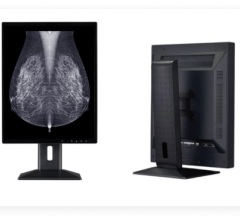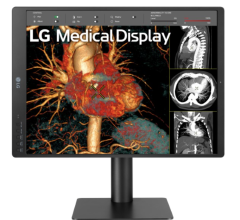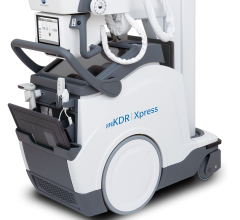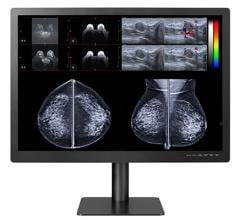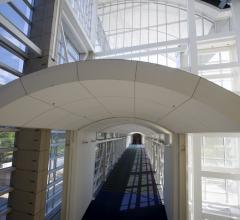
Gary Davis, corporate director, Sales and Marketing, Datalux Corp., Atlanta
With heightened need for higher resolution, three-dimensional color imaging and the advent of smaller, beefed up video cards that rival what’s packed in gaming consoles, it doesn’t take rocket science to forecast active matrix liquid crystal displays quickly are becoming the healthcare industry standard.
Demand spikes and dropping prices for these sleek and slim visual monitors contribute to the technology shift among healthcare facilities to flat panels from the bulkier traditional cathode ray tube (CRT) displays.
As many healthcare facilities scramble to outfit their exam, imaging and treatment rooms for patients, as well as offices and waiting rooms with flat panels some also are looking forward to the next generation of products and the capabilities they might offer to improve efficiencies and performance, such as the potential of detachable wireless displays that serve as portable touchscreen tablet PCs. So what’s ahead for flat panels?
That’s what Outpatient Care Technology wanted to know from the leading flat panel display manufacturers, whose key executives shared their insights on the technological progression of their products for outpatient care facilities.
What are some of the more recent noteworthy improvements in flat panel displays and where are the growth areas for flat panels today in the outpatient arena (e.g., business functions or clinical specialties)? Why?
Lynda Domogalla, product marketing director, Barco Medical Imaging Division, Beaverton, OR (www.barco.com/medical/)
Mammography Screening is a growing area in the outpatient arena. Screening at outpatient clinics supports an increase in patient throughput. Barco’s flat panel displays (Coronis 5MP Mammo) for mammography feature improvements to flat panel display technology specifically designed for mammography: luminance uniformity, defect pixel compensation and high brightness and contrast. Color diagnostic displays (like Barco’s Coronis Color 3MP DL) also provide offer opportunities for the outpatient market. Displays that are bright enough to look at both color and grayscale images provide a versatile solution to view a variety of studies for outpatient clinics.
Gary Davis, corporate director, Sales and Marketing, Datalux Corp., Atlanta (www.datalux.com)
Flat panel PCs designed with mobile computing components (2.5-inch drives, low-voltage mobile processors) that are mounted as easily as an LCD display and eliminate power/video cabling between the display and a computer. These slim devices are used in clinical areas, including patient rooms (on mobile carts or wall-mounted), examination rooms, surgical and ER areas, as well as at nursing stations, laboratories, etc. They may also be mounted on other medical equipment for control.
Ken Compton, radiology product manager, NDS Surgical Imaging LLC, San Jose, CA (www.ndssi.com)
There are two trends proceeding in AM-LCD technology and they deal with speed and brighter color displays. Monochrome LCD cores will always be brighter than color given the same backlight system, but improvements in color filters and overall efficacy has brought the color displays to a performance level equal to or greater than the first softcopy monochrome implementations. Presentations of static images in radiology are not a technical challenge, but pushing a CINE loop or fast W/L function did push the limits of LCD response times. This also prevented their use in Fluoroscopy for angio and catheterization. Both of these issues are disappearing as the basic technology advances for HD televisions and carries over into medical grade applications.
Patrick Herguth, vice president and general manager, Planar Systems Inc. Medical Business Unit, Beaverton, OR (www.planar.com)
The technology for high-resolution (defined as greater than 2MP) imaging used to be predominantly grayscale monitors. This was done to emulate film and to maximize the brightness and contrast of the panels. Today, the technology has evolved to provide higher brightness and contrast for 2MP, 3MP and 4MP color displays so they can be used in more general purpose applications while still providing an adequate platform for the clinical review of radiology images. Planar has the ability to meet the needs of multiple users with our wide portfolio of color products in a wide range of configurations and price points.
Dr. Eberhard Lange, chief technology officer, Siemens Display Technologies, Lafayette, CO (www.automation.siemens.com/
monitors/)
Our focus is primarily with the clinical specialties. Clinical specialties have a variety of demanding technical requirements. Originally, LCD displays introduced a completely new series of tradeoffs in image quality that were not present with CRTs. Early LCDs were known for drastically reduced contrast and brightness with off-angle viewing and significant blur due to pixel response time. Difficulties with heat dissipation either contributed to premature failure or required the use of noisy internal fans. Fortunately, opportunities in the clinical marketplace have helped to drive the development of specialized LCD panel technology such as In Plane Switching (IPS) resulting in display performance with a very wide DICOM-compliant viewing angle. In answering some of your other questions, we will review a number of other technical improvements that contribute to the definition a medical grade display.
Evan Krachman, surgery marketing manager, Sony Electronics Inc. Medical Division, Park Ridge, NJ (www.sony.com/medical)
One recent noteworthy improvement in medical grade flat panel displays is increased resolution. For example, Sony is introducing a new WUXTA (1920-by-1200) 24-inch panel display that offers true high definition (HD) performance. It offers a wider screen than standard surgical monitors, and is the first medical grade wide screen monitor to offer a 16:10 aspect ratio, a perfect match for the new surgical HD cameras that will be coming to the market in 2007.
Mike Zabaneh, vice president, Sales and Marketing, Tangent Inc., Burlingame, CA (www.tangent.com)
Reasonably priced larger screens are making possible more applications and a greater number of economically feasible deployments. This is especially true with large 32,000 grayscale 2, 3, and 5 megapixel panels as well as high-resolution 2, 3, and 5 megapixel color panels. Color calibration is more readily available at lower prices as well. The deployments of PACS and DICOM-grade panels has benefited greatly from the 50-75% price reduction in medical grade panel pricing.
The medical industry is in the midst of a multibillion dollar investment into going digital. The investment into the build-out of the PACS hardware and software infrastructure is one good example. The price reduction in medical grade flat panels makes it possible to deploy more PACS viewing stations in hospitals and to have PACS images transferred digitally to outpatient care facilities equipped with PACS viewing stations. At Tangent we have developed a reasonably-priced PACS viewer that fits in place of a traditional X-ray lightbox even in tightly cramped quarters, such as patient examination rooms.
At Tangent we are integrating flat panels into specially tailored medical products including PACS readers, all-in-one hybrid LCD/PCs and LCD/thin clients. We are also delivering a whole new generation of touch-capable devices aimed at helping clinical workflow as compared to the traditional keyboard and mouse.
Joe Lloyd, president and CEO of Double Black Imaging, Westminster, CO (www.doubleblackimaging.com)
Flat panel displays have improved in several ways: Color technology has improved significantly giving users higher luminance levels and improved contrast. Both color and monochrome are more stable and reliable today thanks to the shift to self-DICOM calibration via built-in front sensors vs. the antiquated method of calibrating with a hand-held photometer or puck. There is tremendous growth in 2, 3 and 5MP self calibrating LCDs and in 5MP LCDs with FDA Certifications for Mammography.
With image clarity and wide viewing angles the norm how do you make flat panel displays even more user-friendly than they are? Easy, plug-and-play network connectivity? Longer lasting image display stability via ongoing drift avoidance? Faster pixel gradation for improved response times? Automatic calibration testing for DICOM compliance (beyond mere alerts)? Remote access and control? Wireless connectivity for flexibility and portability?
DOMOGALLA: For medical imaging, transparent and automatic DICOM calibration and QA are important. Remote access and control of the displays (provided with Barco’s MediCal QAWeb) allows an administrator to manage and maintain displays at multiple sites from one central location. Lifetime on displays is also a critical issue. Barco’s DuraLight backlight technology guarantees an exceptionally long lifetime with reduced color drift at a diagnostic luminance.
DAVIS: In the case of our products, we work hard to keep up with standard available PC and display technologies. As a ‘best in class’ product designed specifically for healthcare applications, we have added the following features: wireless connectivity – allowing wireless network connectivity for PC; sealed case – sealed/fanless design of the all-in-one unit allows easy cleaning and disinfection; integrated touchscreens – more applications are using touchscreen rather than keyboard input; anti-microbial plastic components – all plastic parts include an anti-microbial additive; protected display – display is sealed and protected by a hard-surfaced overlay for protection; easy-to-use controls – upfront brightness controls and a ‘privacy switch.’
HERGUTH: The biggest advance in making the panels more user-friendly has been to make them easily compatible with commercial graphics cards. At Planar we have focused on evolving our technology so that instead of having a ‘closed system’ that consists of a specific PC, graphics card and display we can now allow customers to easily choose the PC and graphics card of their choice and our panels are ready to work out of the box. We have been able to achieve this almost plug-and-play functionality while maintaining all of the features expected of a clinical monitor – DICOM calibration, continuous DICOM monitoring, enterprise monitoring and medical certifications on the entire system.
LANGE: Not everyone is aware that today, improved calibration technology has virtually eliminated the need for routine display calibration. This is best accomplished through feedback systems and a range of highly sensitive internal sensors, factory calibrated with ultra-precise instrumentation to constantly and automatically bring the display back to DICOM conformance. This latest innovation, ‘fully automated stability,’ provides peace of mind to diagnostic review and administrators.
Displays with internal pre-calibrated look-up tables (LUTs) and the new ‘fully automated stability’ system makes auto-calibration pointless. DICOM conformance over time and diagnostic quality of medical monitors is assured by hands-off luminance stability tests. Test results are also stored within the system providing a documented record of conformance. In the unlikely event of a failed conformance test, immediate and automatic email notification is sent to the user and/or designated service staff to alert them of a potential problem.
Calibration allows the user to get the best match of two side-by-side displays. With the latest calibration technology you can custom calibrate the black, white, gamma (DICOM) and the color tint of a color monitor. By using color monitors with this complete calibration package, the color matching problem inherent with pairs of grayscale displays is solved.
Server-based databases for asset management and auto-tracking of the location of the monitors through the network allow a simplified monitor inventory management in the hospitals. Internal tracking software records manipulations on the displays which might impact the image quality.
KRACHMAN: Sony has made flat panel displays more user friendly in a number of ways:
1. We have improved the user interface dramatically on the new 24-inch monitor. Instead of having traditional tactile buttons on the front of the monitor, all buttons have been removed completely. Controls are activated by touching the bezel (frame) of the monitor. The benefit of this is that the settings cannot accidentally be changed when the monitor is being re-positioned. In addition, no indentations on the front of the monitor makes for easier cleaning, a critical need in a sterile environment.
2. Sony also provides an extra layer of protection that is built into every monitor. This is critical as monitors can easily become scratched when being moved on surgical arms located within the operating room. In such cases, the protection guard on the monitor can be replaced without a large expense.
3. Sony has redesigned the menu structure making setup menus very easy to read and more aesthetically pleasing.
4. All of the Sony monitors incorporate a wide variety of video signals, meaning right out of the box the end user does not have to purchase any additional adapters to make their monitors work with their systems. Sony monitors include the following: (all standard on Sony Monitors) Composite, S Video, RGB, Component and DVID.
5. Sony also offers a wide variety of optional input adapters to provide flexible choices in the industry.
6. Sony Medical monitors are built and designed by Sony engineers to the highest broadcast television standards, with emphasis placed on color accuracy and ‘color drift.’ Consistent color accuracy may in fact be more critical in the medical industry as it is in the broadcast industry. The new 24-inch monitor features Chroma-Tru circuitry to ensure color accuracy is maintained automatically.
7. Finally, All Sony monitors can be remotely controlled through industry-standard protocols.
ZABANEH: Easy, plug-and-play network connectivity? Improved firmware with more accurate EDID that integrates with greater compatibility to host devices such as computers. [Longer lasting image display stability via ongoing drift avoidance] can be solved using DVI, LVDS, or HDMI digital inputs and avoiding the use of analog RGB inputs. Faster pixel gradation for improved response times? Yes. Automatic calibration testing for DICOM compliance (beyond mere alerts)? Yes. Remote access and control? Maybe. Wireless connectivity for flexibility and portability? Maybe.
LLOYD: The introduction of more accurate and sophisticated calibration methods has given the user’s more confidence in the display system and improved efficiency while reducing downtime due to display problems. Specifically, the older method of just monitoring backlights and manually DICOM calibrating with a hand-held puck has given way to continuous calibration of backlights and simultaneously calibrating all gray levels and luminance from the front of the LCD, eliminating the need to frequently calibrate manually with a hand-held puck. This method insures accurate, continuous DICOM-calibrated performance while reducing service time required by the IT staff. This process can also be set up remotely from a central workstation. In addition, the technology actually proactively informs the administrator or IT staff of potential problems with the display system before they become patient-care problems.
What do you foresee as the next big development in flat panel applications to expand functionality or improve performance in the outpatient setting? Why? How do you envision the next-generation flat panels functioning or performing differently? What additional capabilities and features will be available to enhance patient care in the outpatient setting?
DOMOGALLA: Remote QA management allows clinics to avoid IT overhead by controlling all displays from one central location. When paired with service options like overnight replacements, this can minimize downtime and eliminate the need to maintain spare equipment locally.
DAVIS: More utilization of touchscreens.
COMPTON: Medical grade displays can be self checking with automatic compensation to provide long term stability and DICOM compliance and report the same to a centralized archive. Remote access to trouble shoot a display is also on the near horizon. The degree to which an LCD display can be stabilized today permits a life of product guarantee to be DICOM compliant. Displays utilized in the OR with multiple formats from endoscopy to PACS, analog video to digital graphics, can be DICOM compliant or color calibrated for endoscopy with a key stroke.
HERGUTH: In the outpatient setting I see a continued push toward higher performance in color displays so they can be used in a wide range of applications.
LANGE: With today’s technology, motion artifacts on LCDs are limiting image quality in some applications. In the near future, faster response times will improve the quality of moving images. This is very important for cardiology (beating heart) and other applications where you need a clear moving image.
A wider color gamut allows better saturation of the colors. This is important for some applications where a perfect color presentation is required. But today, improved color accuracy may have only limited additional diagnostic value.
Improvements in CCFL backlight technology and true color filters result in a color gamut close to the NTSC-defined color space, but the industry has not yet fully reached this capability.
Siemens also sees the opportunity to use LED backlights, which will achieve more than 110 percent of the NTSC color space. In fact, colors may at first look artificially super-saturated, but by calibrating the displays you can bring the gamut down to a level that perfects the image.
Displays are becoming more user friendly because they need less and less tweaking. Medical displays with digital video interface (DVI) and the corresponding graphic controller boards allow plug-and-play solutions if the Look-up Table (LUT) is stored in the display. Additionally, the digital interface contributes to better and more stable image quality.
Up to now the length of a digital transmission was limited to 6 meters. With new DVI-Transmission Line technology, we can extend that distance to 36 meters. This allows the use of DVI even for modalities, where the displays are typically mounted in a ceiling suspension.
Future developments will result in the replacement of the DVI port by the improved ‘display port’ technology. This is a new digital interface that is less susceptible to ‘hum’ and electromagnetic distortion of the signals. The connectors will be smaller than today’s DVI connectors and the possible distances between video source and display will be further extended.
KRACHMAN: We believe the next big step is going to be even higher resolution than 1920-by-1080 as well as larger screen sizes. In addition to the possibility of more 3-D application, we will probably see smaller, thinner, lighter designs and a change from using traditional fluorescent backlighting to LED backlights (LEDs use less power and can provide deeper, richer colors. They will last significantly longer than traditional backlights).
ZABANEH: By adding touch wherever possible to all forms of flat panel equipped devices. Making devices suited to extreme environments including splash-proofing and temperature extremes. Power consumption and DC power, preferably 12VDC, is important for cart-mounted devices. This can be accomplished without compromising brightness with continued improvements in backlighting.
LLOYD: We anticipate additional improvements in color LCDs displaying grayscale images, higher brightness – perhaps doubling within two years – higher contrast. There will also be more remote functionality and control over the display system and continuing improvements and expansion of the proactive maintenance features.





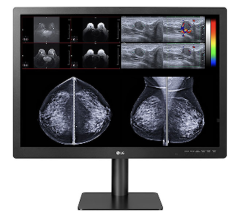
 March 12, 2024
March 12, 2024 
